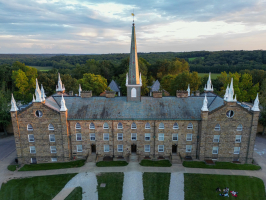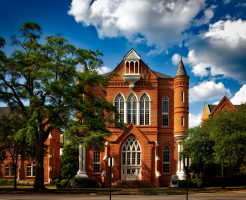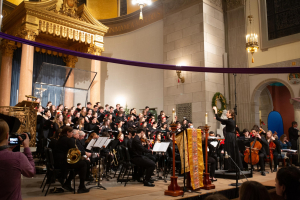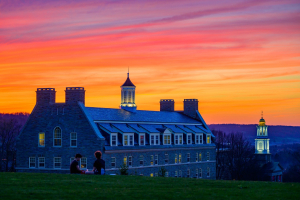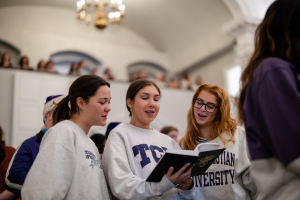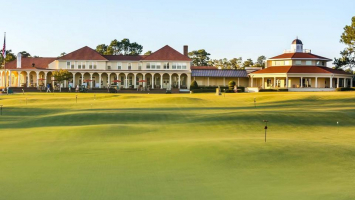Top 10 Best National Liberal Arts Colleges in the US
A liberal arts college, also known as a liberal arts institution of higher learning, is a college that focuses on undergraduate studies in the liberal arts and ... read more...sciences. In contrast to a professional, vocational, or technical curriculum, such colleges aim to impart broad general knowledge and develop general intellectual capacities. Students at a liberal arts college typically major in one discipline while being exposed to a diverse range of academic subjects, including sciences as well as traditional humanities subjects taught as liberal arts. Let Toplist help you find the best national liberal arts colleges in the United States.
-
Williams College is one of the country's oldest colleges, located in Williamstown, Massachusetts, at the foot of Mount Greylock in the Berkshires. The school was founded as a men's college; women were admitted for the first time in 1971. Williams College has three academic divisions: arts and humanities, social sciences, and science and mathematics, as well as graduate programs in art history and economics. Williams' class sizes are small, with a student-teacher ratio of 7-to-1. There are also Oxford-style tutorials at the school, which rely heavily on student participation. Its alumni society is the world's oldest; it hosted the first intercollegiate baseball game, and its class of 1887 was the first in the United States to wear caps and gowns at graduation. Each graduation, the school has a tradition of dropping a watch from the top of the college chapel.
Williams is a highly selective school, with only 8% of the Class of 2025 accepted. Since 2004, it has ranked first in U.S. News & World Report's rankings of National Liberal Arts Colleges, and it has also held high-ranking positions in other institutional rankings. The average redesigned SAT for freshmen admitted in fall 2019 is 733 in evidence-based reading and writing and 749 in math. The average ACT Composite score for super scorers was 33.
Website: https://www.williams.edu
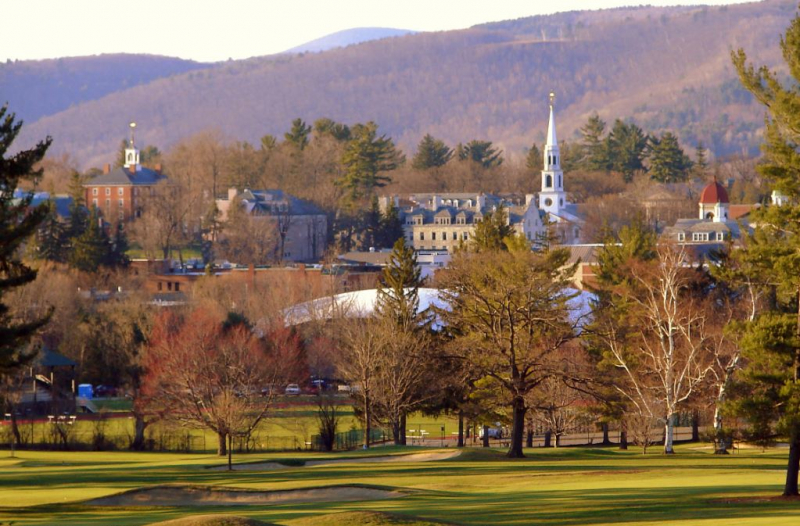
Williams College 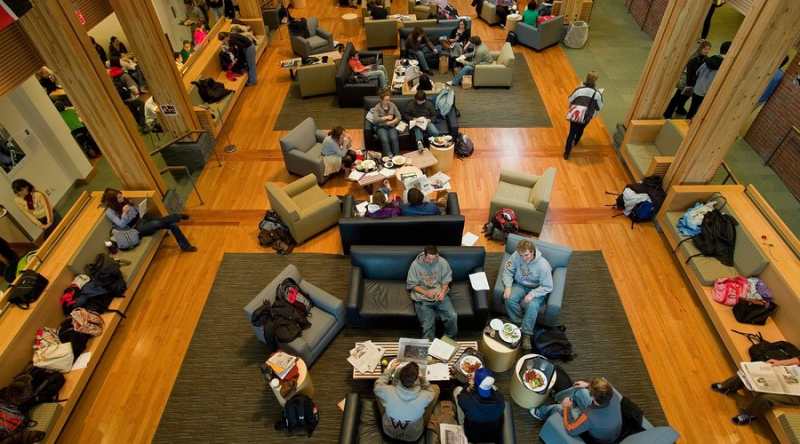
Williams College -
Amherst College, in Amherst, Massachusetts, is well-known for its rigorous academic environment. Amherst is part of the Five Colleges consortium, along with Smith, Mount Holyoke, Hampshire, and the University of Massachusetts at Amherst. Students may enroll in classes at any of these colleges.
Amherst is a four-year university that only accepts undergraduate students; in the fall of 2018, the school had 1,855 students enrolled. Admissions are highly selective, and it frequently ranks at or near the top of most liberal arts school rankings. Students select courses from 38 major programs in an open curriculum; they are not required to study a core curriculum or meet any distribution requirements; students may also design their own interdisciplinary major.
Amherst College has been ranked first overall among 266 liberal arts colleges in the United States ten times since the rankings' inception in 1987 and was ranked second in 2016 behind Williams. In 2018, Amherst was ranked as the best liberal arts college in the country by The Wall Street Journal.
Website: https://www.amherst.edu/admission
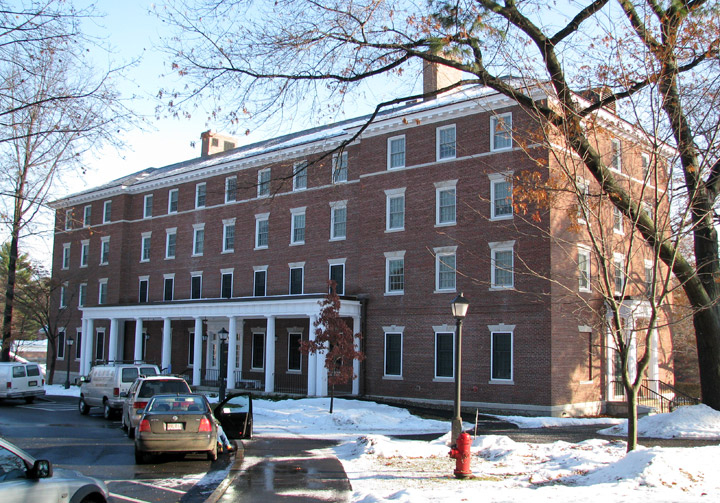
Amherst College 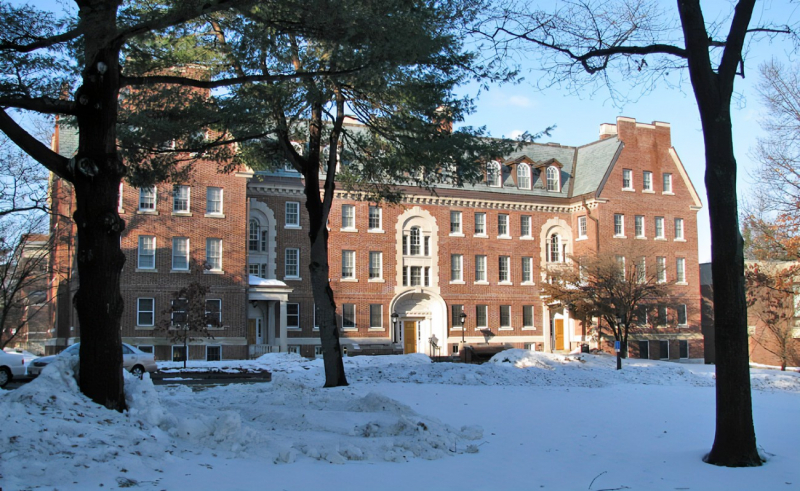
Amherst College -
Swarthmore College is located 11 miles southwest of Philadelphia, far enough away to have a 425-acre arboretum campus. Members of the Religious Society of Friends founded the school, but it no longer has a religious affiliation. On campus, there are over 100 organizations in which students can get involved, and approximately 40% of students study abroad.
Swarthmore's Oxbridge tutorial-inspired Honors Program allows students are able to take double-credit seminars beginning in their third year, and they frequently write honors theses. Seminars are typically made up of four to eight students. Seminar students typically write at least three 10-page papers per seminar, with one of these papers often expanding into a 20–30 page paper by the end of the seminar. Honors students take oral and written examinations administered by outside experts in their field at the end of their final year.
Website: https://www.swarthmore.edu
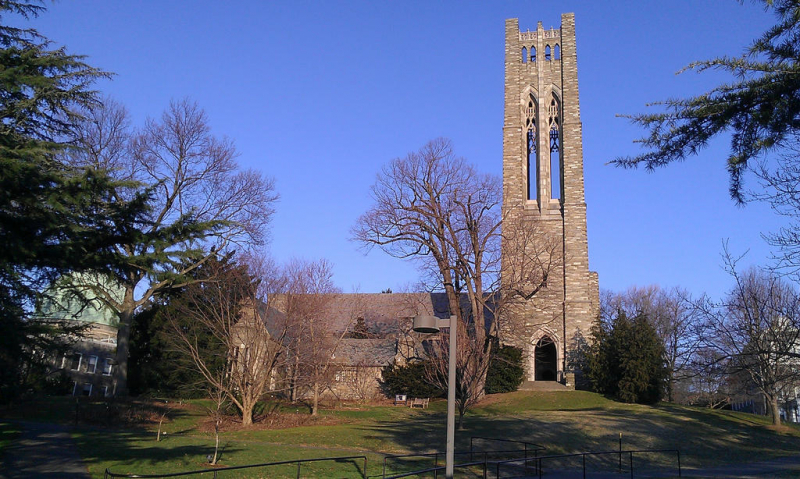
Swarthmore College 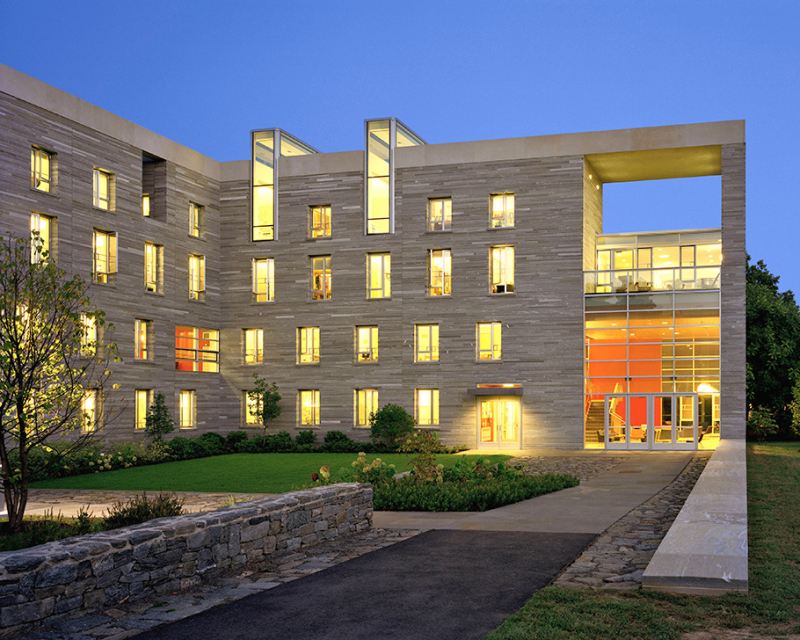
Swarthmore College -
Pomona is a member of the Southern California Intercollegiate Athletic Conference, which is part of the NCAA Division III. If requested, on-campus housing is guaranteed, and more than 97 percent of students live in the 14 residence halls, two-thirds of which have single rooms. Pomona has over 200 student organizations.
Pomona College has approximately 45 majors and an 8:1 student-faculty ratio. Students at Pomona can also take classes at the Claremont Colleges consortium's other six colleges: Scripps College, Claremont McKenna College, Harvey Mudd College, Pitzer College, Claremont Graduate University, and Keck Graduate Institute of Applied Life Sciences. More than half of Pomona students study abroad in one of the nearly 50 programs offered by the university in approximately 30 countries.
Pomona University provides liberal arts education and awards the Bachelor of Arts degree. The semester system is used at the college, with a normal course load of four full-credit classes per semester. Along with the requirements of a major, a first-year critical inquiry seminar, at least one course in each of six "breadth of study" areas, proficiency in a foreign language, two physical education courses, a writing-intensive course, a speaking-intensive course, and an "analyzing difference" course, 32 credits, and a C average GPA are required to graduate.
Website: https://www.pomona.edu
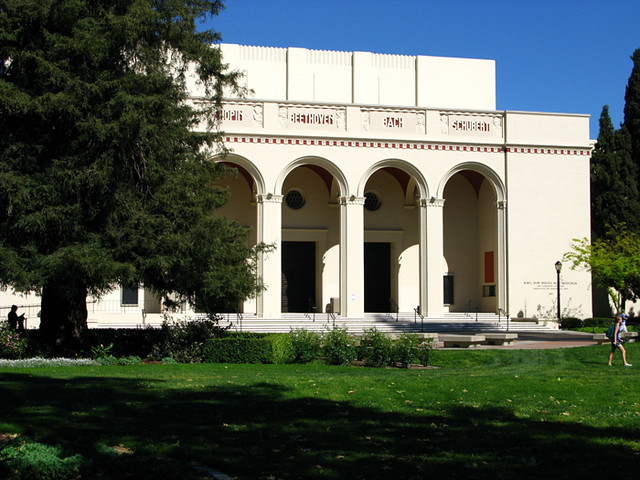
Pomona College 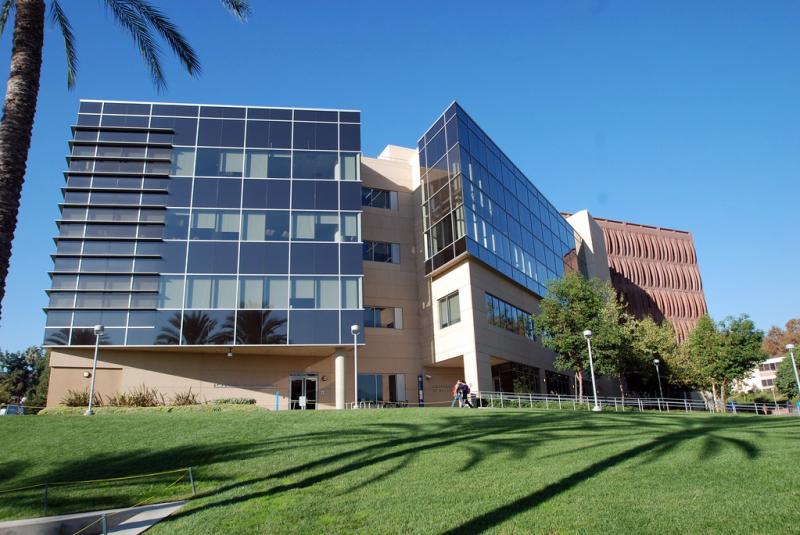
Pomona College -
Wellesley has a cross-registration program with MIT, which allows students to take a wider range of courses. In addition, as part of the Twelve College Exchange Program, students can spend a semester at another college in the Northeast. The college has a strong science program, including the second-oldest physics lab in the country. The Davis Degree Program at Wellesley allows women over the age of 24 to attend college. There are also many traditions at the school, such as an annual hoop-rolling race between the seniors and step singing, in which the academic classes compete to out-sing each other.
Wellesley College, 12 miles west of Boston in Wellesley, Massachusetts, has a picturesque campus that includes a lake, woodlands, an arboretum, and open meadows. It is a women's liberal arts college and one of the original Seven Sisters Colleges, along with Mount Holyoke, Vassar, Smith, Radcliffe (now part of Harvard), Bryn Mawr, and Barnard. On campus, students can choose from over 150 student organizations. The NCAA Division III East College Athletic Conference is home to 14 varsity athletic teams at the school. Wellesley has societies that serve as social and academic clubs rather than sororities. Incoming freshmen are guaranteed to house, and the majority of students live in one of Wellesley's 21 residence halls for the duration of their four years.
Website: https://www.wellesley.edu
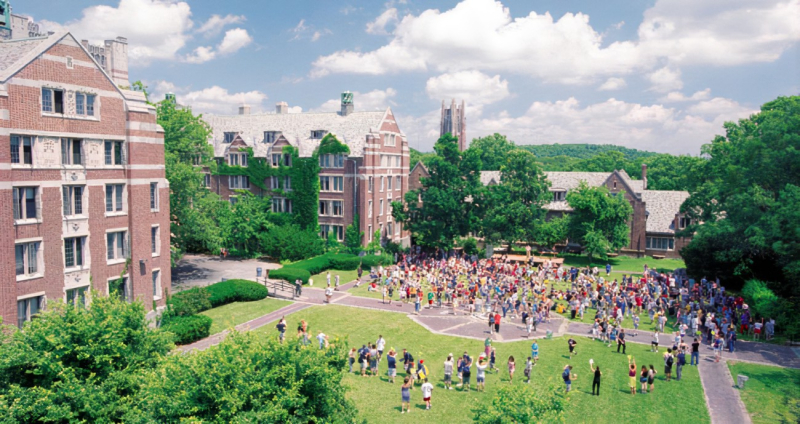
Wellesley College 
Wellesley College -
Bowdoin College was founded in 1794 as a private institution. It has 1,777 undergraduate students (fall 2020), a suburban setting, and a campus size of 207 acres. The academic calendar is semester-based. Bowdoin College is ranked #6 in National Liberal Arts Colleges in the 2022 edition of Best Colleges. The total cost of tuition and fees is $58,322.
Bowdoin College is located in Brunswick, Maine, a coastal New England town. In the NCAA Division III New England Small College Athletic Conference, the Bowdoin Polar Bears compete in 30 varsity sports. There are over 100 student organizations at Bowdoin. Freshmen are required to live on campus and are assigned to a college house where they can participate in residential social activities.
For the Class of 1987, the requirement of at least two courses in each of the categories of Natural Sciences/Mathematics, Social and Behavioral Sciences, Humanities/Fine Arts, and Foreign Studies (including languages) went into effect and has been gradually amended since then. Natural Sciences, Quantitative Reasoning, Visual and Performing Arts, International Perspectives, and Exploring Social Differences are currently required courses. A First-Year Seminar, a small writing-intensive course, is also required.
Website: https://www.bowdoin.edu
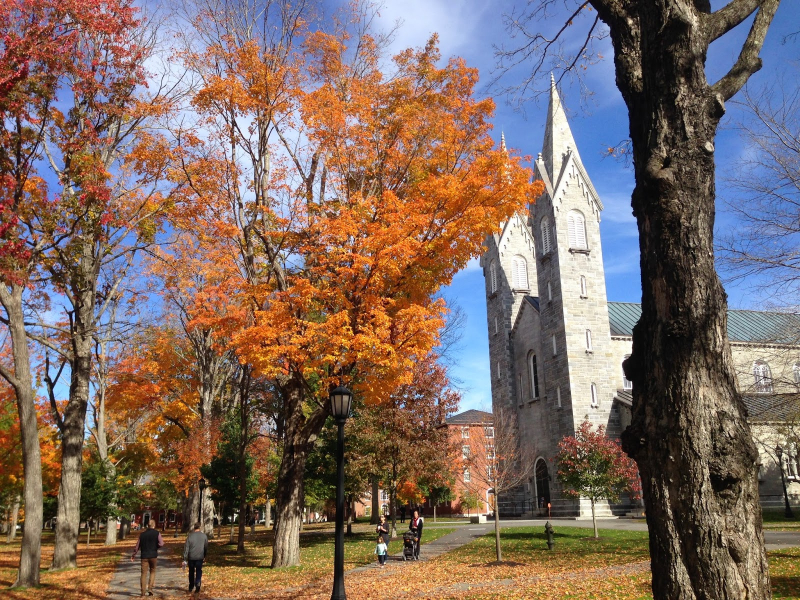
Bowdoin College 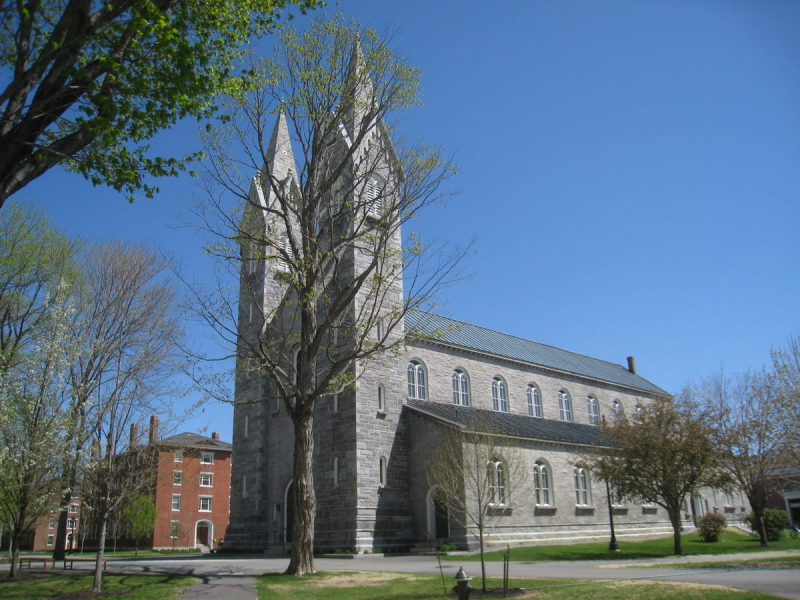
Bowdoin College -
The United States Naval Academy is located in Annapolis, Maryland, about 33 miles east of Washington, where the Severn River meets the Chesapeake Bay. It is the second most established of the five federal service academies. Midshipmen are officers in training whose tuition is fully funded by the United States Navy in exchange for active-duty service after graduation. The Naval Academy participates in the Patriot League and the American Athletic Conference and has NCAA Division I intercollegiate varsity sports.
To graduate, midshipmen must complete certain physical education requirements throughout all four years. From the debate team to the scuba club, the school provides more than 70 extracurricular activities for midshipmen. Midshipmen all live in Bancroft Hall, a massive dormitory complex, and are paid a monthly stipend.
Graduates of the United States Naval Academy receive a Bachelor of Science degree and are eligible to serve in the United States Navy or Marine Corps. Applicants must apply directly to the academy as well as be nominated by a member of Congress. The Ring Dance, during which second-class midshipmen receive their class rings, is a campus tradition.Website: https://www.usna.edu
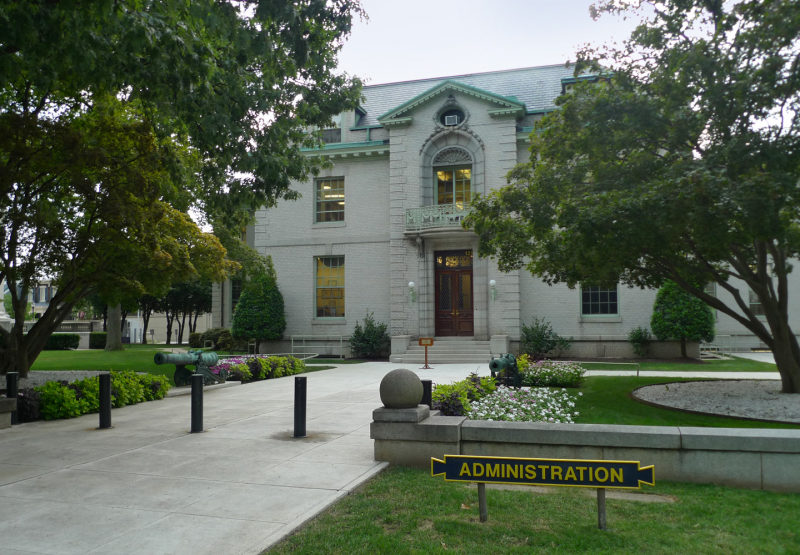
United States Naval Academy 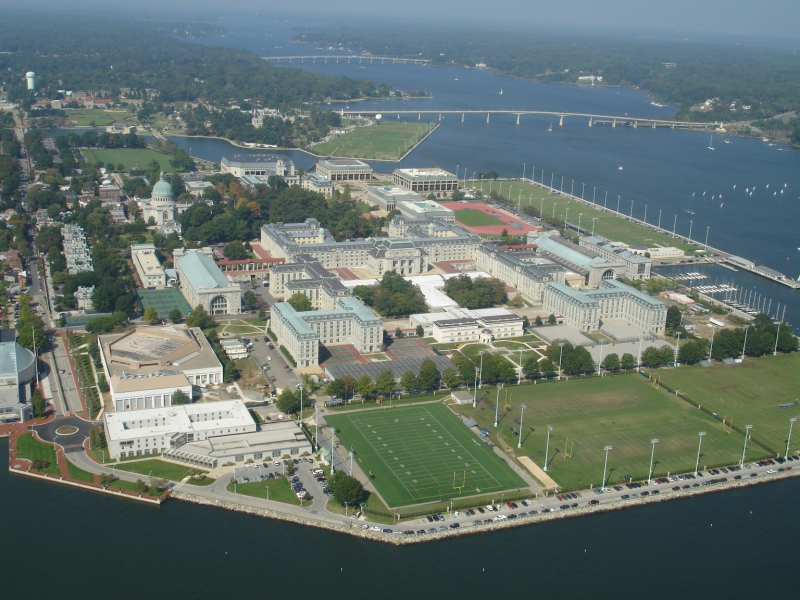
United States Naval Academy -
Claremont McKenna College is located 35 miles east of downtown Los Angeles in Claremont, California, at the foot of the San Gabriel Mountains. The Claremont Colleges is a seven-college consortium that includes Scripps College, Pomona College, Harvey Mudd College, Pitzer College, Claremont Graduate University, and the Keck Graduate Institute of Applied Life Sciences. Students can attend classes at any of the member institutions and participate in social activities, athletics, and dining services at any of the five undergraduate and two graduate colleges.
Claremont McKenna College, despite being primarily an undergraduate institution, offers a graduate master's program in finance through the Robert Day School of Economics and Finance. Claremont McKenna was founded as Claremont Men's College before becoming a coeducational institution in 1976. At Claremont McKenna, slightly more than half of all students study abroad in various locations around the world. The school is home to ten prestigious research institutes where students can conduct graduate-level research with faculty.
CMC is a private, non-profit organization that is part of the Claremont Colleges consortium of seven institutions. Students can take classes at any of the member colleges, and they share libraries, student health services, a bookstore, athletic facilities, and other student services.
Website: https://www.cmc.edu
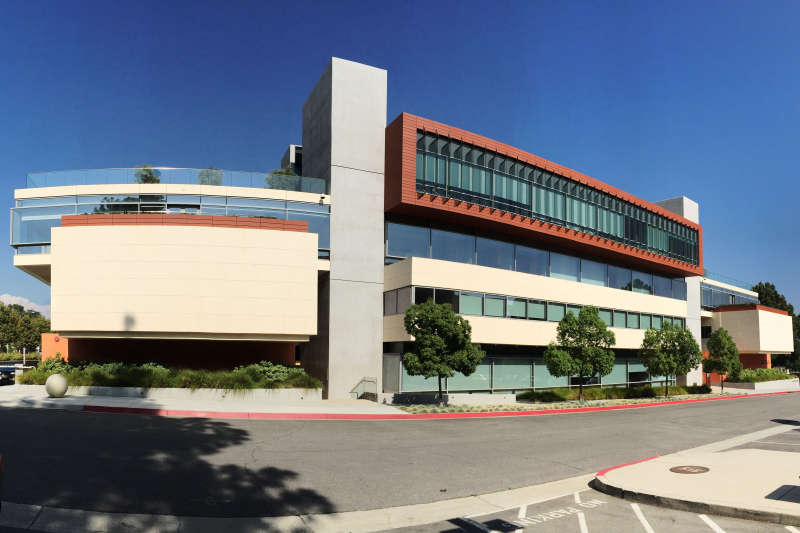
Claremont McKenna College 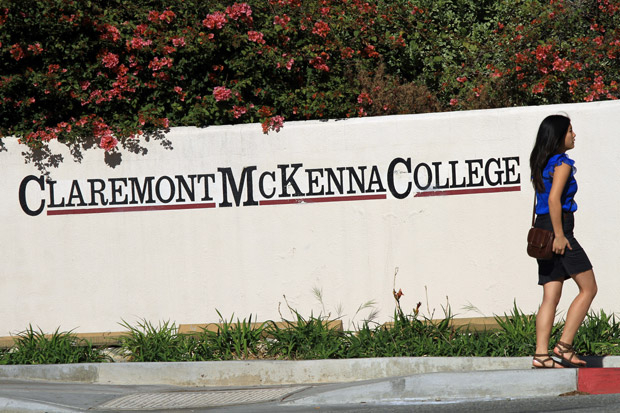
Claremont McKenna College -
Carleton College is located in Northfield, Minnesota, a historic river town. The Carleton Knights compete in the NCAA Division III Minnesota Intercollegiate Athletic Conference with 19 varsity athletic teams. Carleton University has over 170 student organizations, many of which have creative names, such as the Carleton Juggling F.I.S.H., the One Knight Stands cabaret troupe, and the Knightingales a cappella group, to name a few. Students enjoy intramural sports such as quidditch, broomball, dodgeball, and sand volleyball. All freshmen are required to live on campus, and approximately 90% of students choose to live in one of the residence halls, shared interest houses, or campus townhouses.
Carleton College has nearly 40 undergraduate majors. Carleton is a small liberal arts college that is accredited by the Higher Learning Commission and offers 33 majors and 31 minors. Students can also choose to design their own major. Spanish, French, German, Chinese, Japanese, Russian, Arabic, Latin, Greek, and Hebrew are among the ten languages available. The academic calendar is based on a trimester system, with students typically taking three classes per 10-week term. According to U.S. News & World Report, admission to Carleton is "most selective". The admittance rate for the incoming class of 2023 was 19.2 percent of all applicants, making Carleton the most selective college in Minnesota.
Website: https://www.carleton.edu
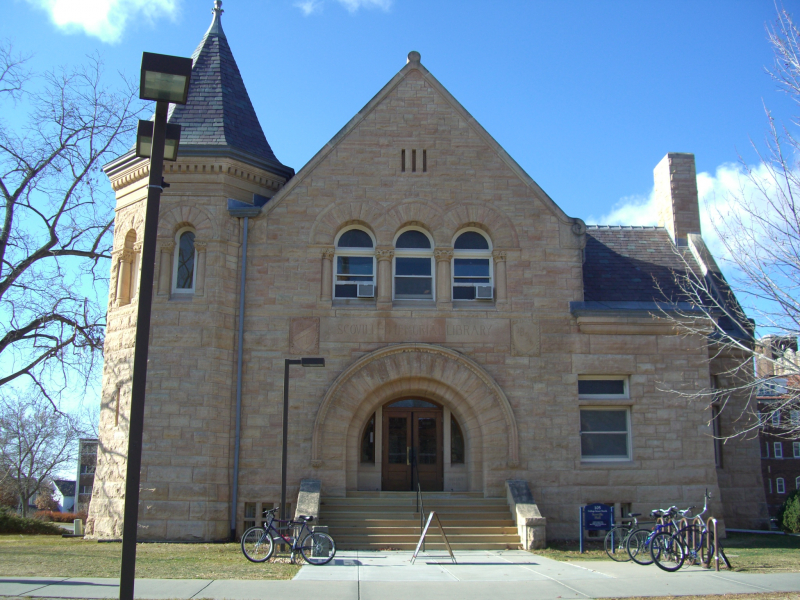
Carleton College 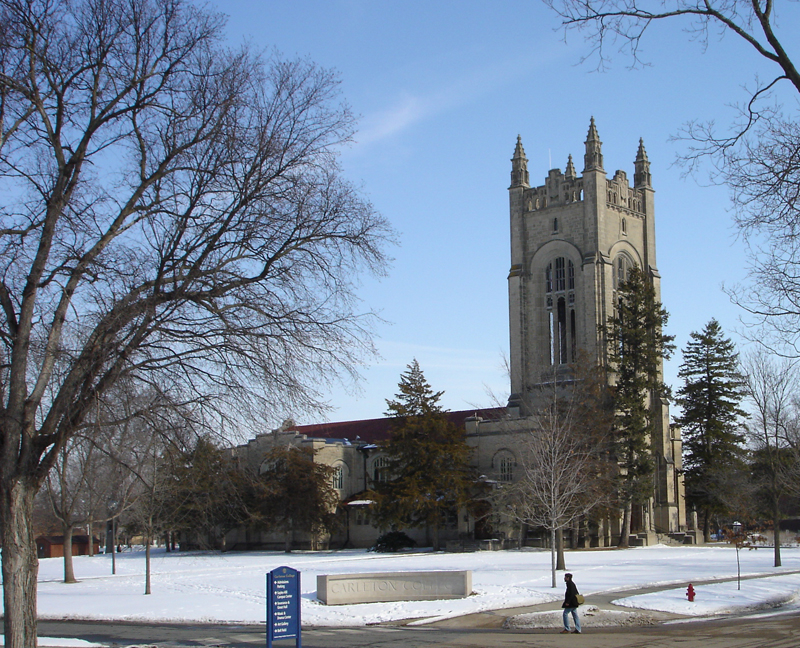
Carleton College -
Middlebury College, in the small town of Middlebury, Vermont, is located in the Champlain Valley between the Green Mountains and the Adirondacks. On campus, students can participate in over 150 organizations. All freshmen must live on campus and are assigned to one of five Commons, which offer academic and social activities.
By a number of recent graduates, the most popular majors at Middlebury are economics, international studies, English and American literature, political science, psychology, and environmental studies. Approximately 40% of graduating seniors pursue a single major in a traditional academic discipline, while 30% pursue a double or joint major combining two disciplines. Another 30% of students pursue a degree in one of the college's interdisciplinary programs. The Carnegie Foundation classifies Middlebury as one of the "most selective" universities whose first-year students' test scores place these institutions in roughly the top fifth of baccalaureate universities.
Website: https://www.middlebury.edu
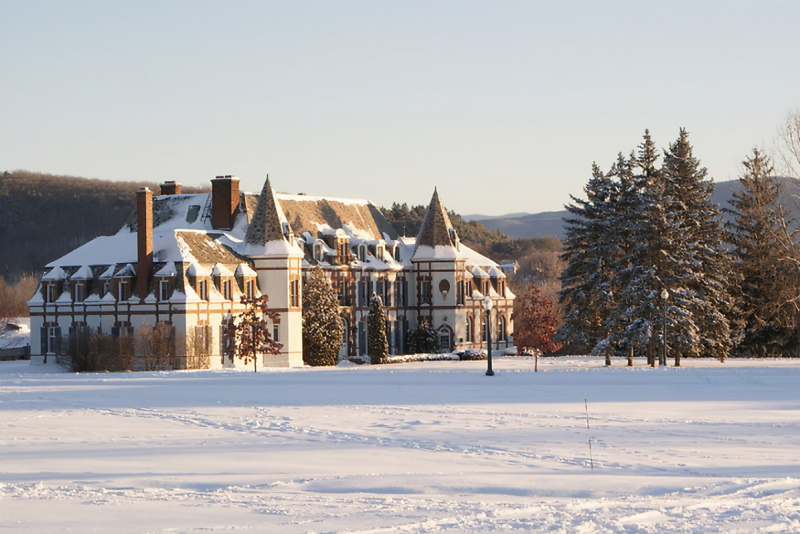
Middlebury College 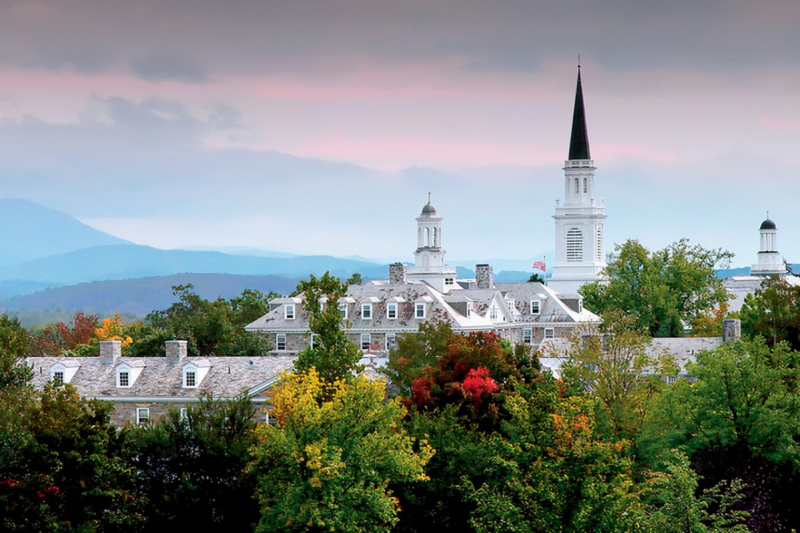
Middlebury College













